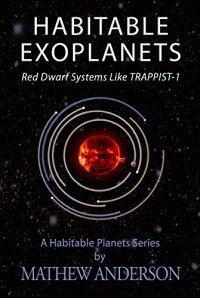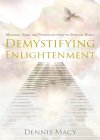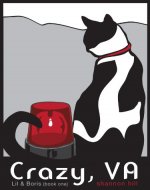Amazon Best Selling Author – #1 in Astronomy, Astrophysics & Space Science, and Cosmology
Discover in a short and comprehensive read the chance of exoplanets being habitable around the most exotic and abundant type of star in the Universe – red dwarfs. You will also get a peek into the wildly different environments of these exotic worlds with features unlike anything we experience here on Earth!
A common misconception is that our own star type, G-class, is the most common star. This is far from reality. Red Dwarfs (comprising of both late K-type and all M-type) are at least 70% of all stars in the Milky Way galaxy. While life has been located around our own star type (as we are here to talk about that revelation), it would be shortsighted to ignore the vast majority stars because we have assumptions about how inhospitable they may be for life — assumptions that are quickly being overturned.
“To consider the Earth as the only populated world in infinite space is as absurd as to assert that in an entire field sown with millet, only one grain will grow.” – Metrodorus of Chios, 4th century BCE.
KEY SECTIONS
– Introduction
– Common Definitions
– Introducing Red Dwarf Stars
– Surprise! Red Dwarfs Host Planets Too
– Red Dwarf Planetary Systems
– Making a Red Dwarf Planet Habitable
– A Star’s Temperament
– A Planet’s Shielding
– Water Worlds
– A Delicate Balance
– Introducing Tidally Locked Worlds
– Civilization on a Tidally Locked World
– A New Generation of Telescopes
– Summary: A Universe Filled with Habitable Exoplanets
BASIC HABITABILITY CHECKLIST
– Is the star past its early years of active flaring?
– Does the planet have a magnetic field of any kind?
– Does the planet have an atmosphere?
– Is there any kind of atmospheric recycling occurring?
– Does the planet have liquid water on its surface?
– And for the support of a technological civilization, does the planet have between 10-40% land coverage?
“Given all that we have covered in this book, if I were to sum up the chances of finding complex life around a red dwarf star, a star that’s at least a couple of billions of years old, I would personally rate the chance at 1 of 5 (20%). This percentage is still nearly twice as many stars as the total of all Sun-like stars in our galaxy. By this statistic alone, red dwarf worlds demand all the telescope time they can get.” – Mathew Anderson
I hope you enjoy reading this relatively short but big picture view of the habitability of red dwarf exoplanets!













